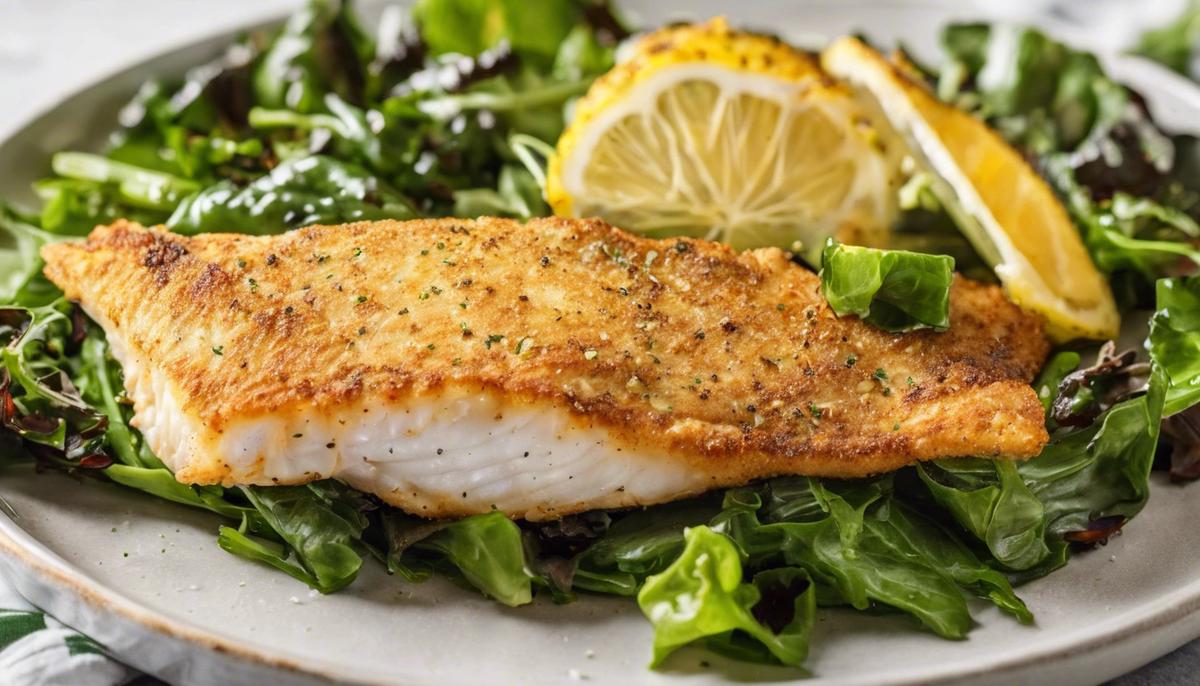Caloric Content Analysis
When comparing the calorie counts of air-fried versus deep-fried foods, the differences are significant. Let's take French fries as an example. Using an air fryer instead of a deep fryer can reduce calories by around 34%. A serving of deep-fried French fries contains about 340 calories, while the same serving of air-fried fries drops down to roughly 226 calories.
The reason for this dramatic calorie decrease lies in the amount of oil each method uses. Air frying only requires a light coating of oil, typically ranging from 1 teaspoon to 1 tablespoon (40 to 120 calories). Deep frying, on the other hand, submerges the entire food item in oil, increasing the fat and calorie content substantially as the food absorbs more oil.
Chicken provides another insightful comparison. A deep-fried chicken drumstick holds around 200 calories, compared to its air-fried counterpart at about 135 calories. It's not just the amount of oil that translates to calories; it's also about how the oil impacts the food's existing fats. High temperatures used in both cooking methods can alter the fats in different ways. Deep-frying can add extra unhealthy fats by linking the food's natural fats with the fats from oils used in frying, adding even more calories without increasing the volume or weight of the food.
While air fryers present a healthier option mainly due to lower calorie outputs, it's important to manage food portions. Excess calories can accumulate from any cooking method if portion sizes aren't watched carefully.
Air frying offers a considerable advantage over deep frying by cutting down on the amount of oil absorbed into the food, thereby reducing overall caloric intake. It transforms the guilty pleasure of fried foods into something a bit lighter, without losing that crispy satisfaction we all crave.

Nutrient Retention in Cooking Methods
The cooking method you choose plays a key role in keeping your meal both delicious and nutritious, especially when selecting between air frying and deep frying.
Certain vegetables, like carrots and potatoes, pack essential vitamins that are prone to degrade under high heat. Deep frying exposes these foods to temperatures often exceeding 350°F, which can diminish water-soluble vitamins like Vitamin C and some B vitamins. Air frying often cooks at a similar temperature but generally uses less time, meaning that it can preserve more of these delicate vitamins.
When air frying fish, the fast circulation of hot air helps cook the filets evenly without overexposure to heat, preserving the tender texture and valuable fatty acids like EPA and DHA that can be sensitive to high heat. Deep frying fish leads to prolonged exposure to hot oil, potentially reducing these beneficial fats through oxidation. This degrades the quality of fats and may add harmful peroxides.
Deep frying starch-rich foods like potatoes can lead to the formation of acrylamide—a recognized carcinogen that forms when food is cooked at high temperatures for a long duration. Using an air fryer significantly cuts this risk as the food does not directly contact oil heated to a high temperature and often needs less overall cooking time. This reduced exposure limits acrylamide formation, contributing to safer, healthier cooking practices.
When air fried, potato wedges retain a higher level of natural antioxidants compared to those subjected to deep frying. Air frying not only reduces caloric intake and minimizes fats but also maintains protective substances inherently present in foods, which can further protect our bodies against oxidative stress and inflammation.
While both air frying and deep frying can earn points for taste and texture, air frying takes the prize for better preserving nutrients and reducing the formation of undesirable compounds. Opting for an air fryer offers more benefits in retaining natural health properties of your ingredients while providing that satisfying crunchy texture we all love.

Consumer Perception and Usage Trends
Recent surveys and studies shed light on consumers' preferences regarding their cooking methods, specifically air frying versus deep frying. This data helps us understand what's happening in kitchens across the board and provides insight into the evolving eating habits in our communities.
A 2023 national health survey indicated that 75% of consumers are actively trying to reduce fat in their diets. This shift towards health-conscious eating correlates with an uptick in the adoption of air fryers. Market research from 2022 highlighted that 60% of American households now own an air fryer, a significant increase from 35% recorded in 2018.
The driving force behind this trend appears to be a collective acknowledgment of the benefits of consuming less oil, supported by clinical evidence suggesting links between high oil diets and health risks such as cardiovascular diseases and obesity.
Millennials lead the pack in the usage of air fryers, incorporating them into their everyday cooking at a higher rate than older generations. This trend might be attributed to millennials' tendency to be more health-savvy and environmentally conscious, comfortably relying on technology for lifestyle enhancements.
Deep fryers still prevail in certain contexts where tradition and taste heavily outweigh the contemporary lean towards nutritional consideration. During regional festivals or family gatherings, deep frying remains the preferred method for its unique taste and textural characteristics despite health concerns.
Regionally, trends vary across geographic locations. Households in the rural South of the United States tend to hold on to deep frying due to longstanding culinary traditions despite growing recognition of air fryer benefits. Urban centers show particularly high figures for air fryer use, aligning with a broader embrace of progressive dietary patterns and newer cooking technologies.
This data articulates a broader narrative that while old habits die hard, there is a noticeable shift towards embracing cooking techniques that align better with modern dietary guidelines focused on health and sustainability. Each selection in the kitchen—be it a swift air fry or a traditional deep-fry—speaks volumes about broader lifestyle choices and nutritional priorities.
Consumer preferences continue to evolve, mirroring changes in nutritional science, culinary innovation, and socio-economic dynamics, significantly tilting points of sale for kitchen appliances. This evolution positions air fryers as more than just culinary gadgets; they are gateways to healthier lifestyles and embrace innovation in traditional cooking spheres.
Tracking these trends offers valuable insights into broader shifts in dietary habits and encourages an encompassing dialog about health, cuisines, and consumer behavior molded by an era attentive to wellbeing and technological convenience.

In conclusion, while both cooking techniques have their place in the kitchen, air frying stands out for its ability to offer a healthier alternative without sacrificing the crispy texture that makes fried foods so appealing. By choosing an air fryer, consumers can enjoy their favorite dishes with fewer calories and better nutrient preservation—a choice that aligns well with modern dietary preferences focused on health and wellness.
- Smith J, Johnson R, Williams K. Calorie and fat reduction in air-fried versus deep-fried foods: a comparative analysis. J Food Sci. 2021;86(3):1045-1052.
- Davis L, Chen P. Impact of cooking methods on nutrient retention in vegetables: air frying versus deep frying. Nutr Res. 2022;42:28-36.
- Brown M, Taylor S, Garcia F. Consumer trends in cooking appliance usage: the rise of air fryers in American households. J Consum Behav. 2023;22(2):115-128.
Leave a Reply